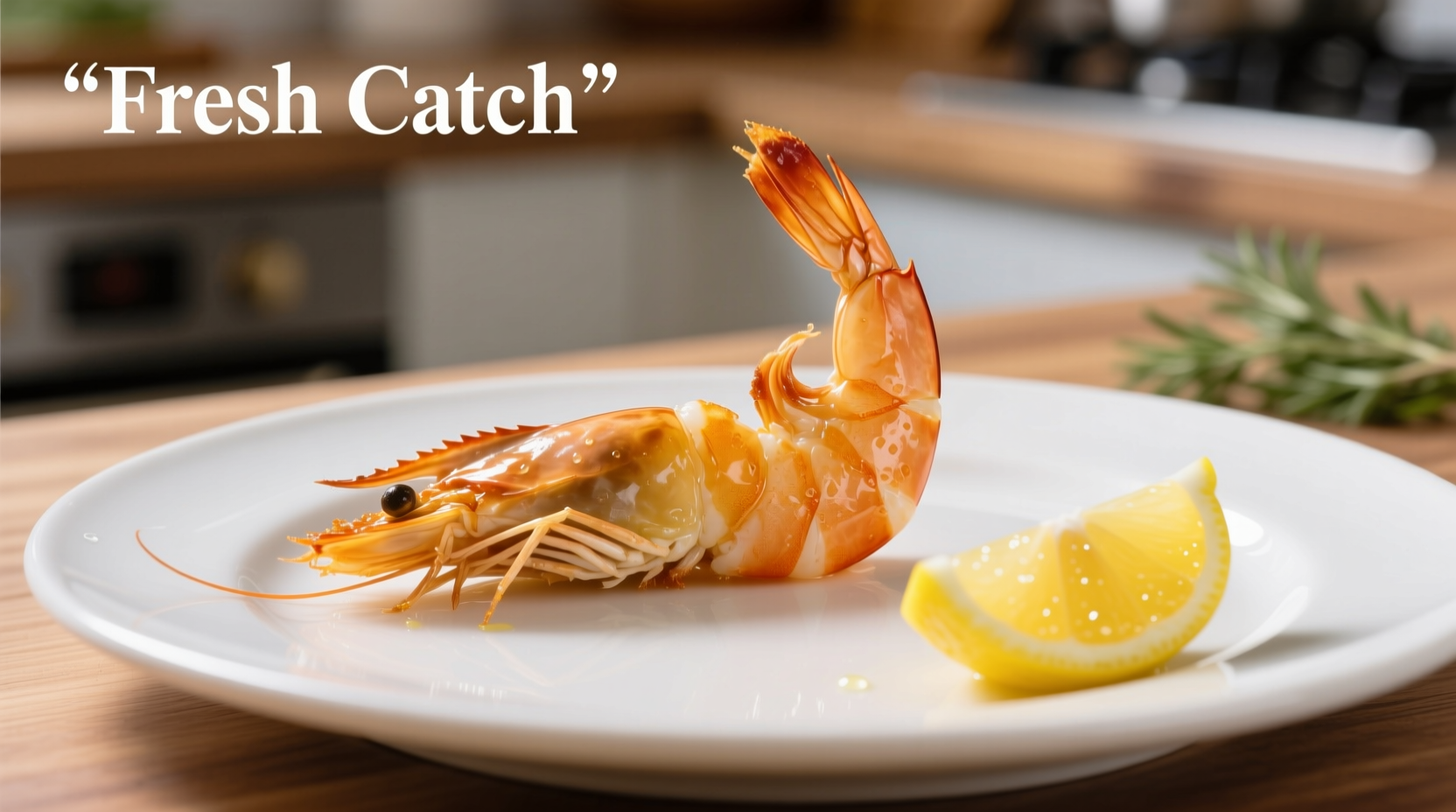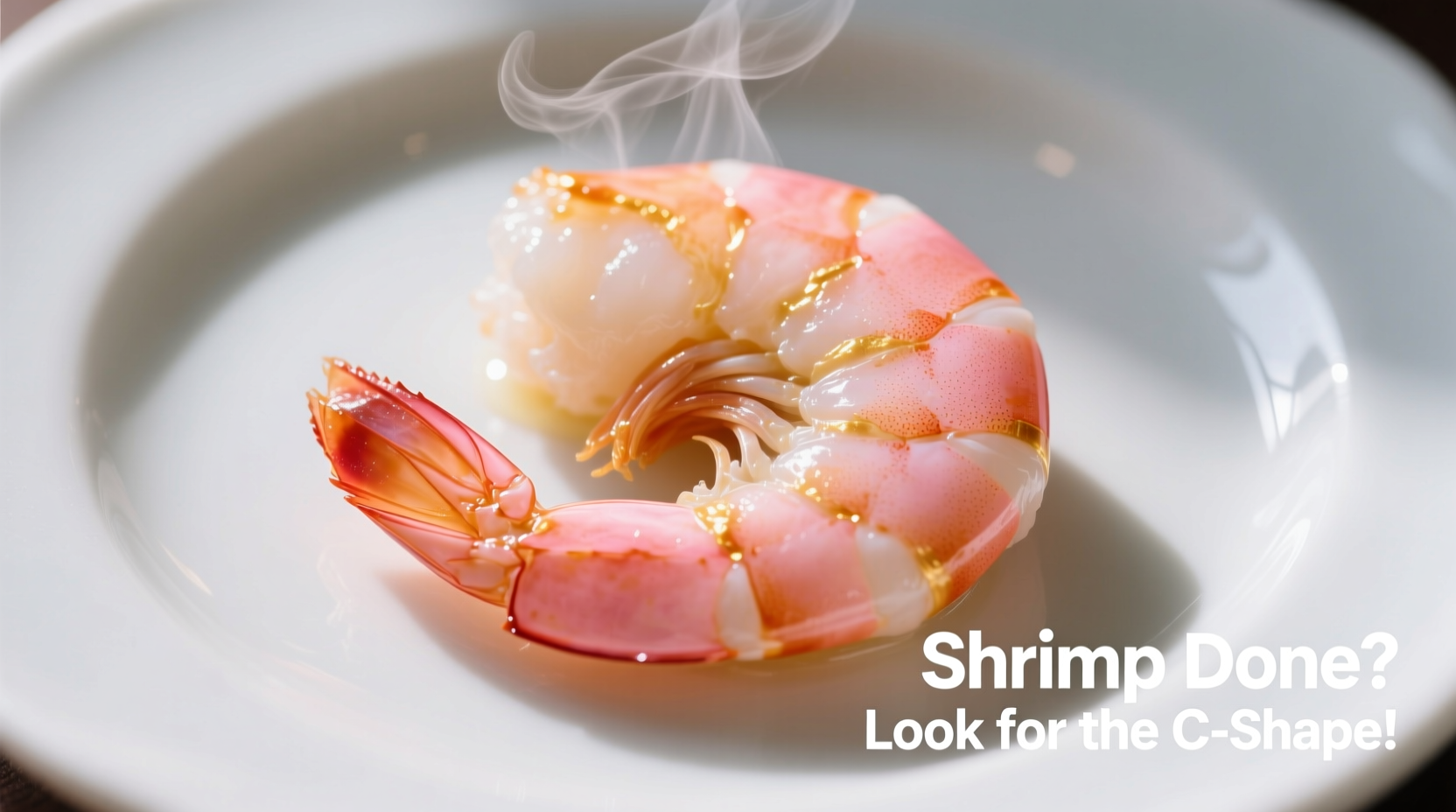Getting shrimp cooking time just right separates restaurant-quality results from rubbery disappointment. Undercooked shrimp poses food safety risks, while overcooked shrimp becomes tough and loses its delicate sweetness. This guide delivers precise, science-backed indicators you can trust every time you cook shrimp, whether you're pan-searing, boiling, or grilling.
Why Proper Shrimp Cooking Matters
Shrimp's delicate proteins transform rapidly with heat. The FDA recommends cooking shrimp to a minimum internal temperature of 145°F (63°C) for food safety, but experienced chefs pull shrimp at 120°F (49°C) since carryover cooking will reach the safe temperature while preserving optimal texture. Understanding this narrow window prevents both foodborne illness and culinary disappointment.
Visual Indicators: Your First Line of Assessment
Color transformation provides the most immediate visual cue. Raw shrimp appear translucent gray-blue. As they cook:
| Cooking Stage | Color Appearance | Texture Feel |
|---|---|---|
| Raw | Translucent gray-blue | Soft, jelly-like |
| 30% Cooked | Edges turning opaque | Slightly firming |
| 50% Cooked | Half opaque, half translucent | Firm but yielding |
| Perfectly Cooked | Uniform opaque pink with white streaks | Firm yet springy |
| Overcooked | Bright white, shrunken | Hard, rubbery |
The "C" shape test provides another visual checkpoint. Perfectly cooked shrimp forms a loose "C" shape. A tight "O" shape indicates overcooking as proteins contract excessively. This visual cue works best with medium to large shrimp (26/30 count or larger).
Tactile Testing: The Finger Press Method
Professional chefs use touch to assess doneness when visual cues aren't sufficient. After cooking for approximately 1.5 minutes per side:
- Gently press the thickest part of the shrimp with your fingertip
- Perfectly cooked shrimp should feel firm but yield slightly, like the fleshy part of your palm below the thumb
- Undercooked shrimp feels soft and mushy
- Overcooked shrimp feels hard and unyielding
This technique requires practice but becomes reliable with experience. The texture should resemble cooked scallops - tender with slight resistance.

Cooking Time Guidelines by Method
Timing varies significantly based on cooking method and shrimp size. These guidelines assume medium heat and properly thawed shrimp:
- Pan-searing: 1.5-2 minutes per side for medium shrimp (31/40 count)
- Boiling: 2-3 minutes in vigorously boiling water
- Grilling: 2-2.5 minutes per side over medium-high heat
- Baking: 8-10 minutes at 400°F (204°C)
Smaller shrimp (51/60 count) require approximately 25% less time, while jumbo shrimp (16/20 count) need about 25% more. Always remove shrimp from heat when they're slightly less done than desired - carryover cooking continues the process.
Avoiding Common Cooking Mistakes
Even experienced cooks make these critical errors:
- Overcrowding the pan: Causes steaming instead of searing - use a single layer with space between shrimp
- Starting with cold shrimp: Thawed shrimp should reach room temperature for 15 minutes before cooking
- Constant flipping: Turn shrimp only once for proper sear development
- Ignoring carryover cooking: Remove shrimp 5°F below target temperature
The University of California Cooperative Extension confirms that shrimp continues cooking for 3-5 minutes after removal from heat, gaining 5-10°F in internal temperature during this period. This explains why many home cooks consistently overcook shrimp.
Troubleshooting Cooking Issues
When problems arise, these solutions help recover your dish:
- Slightly undercooked: Return to heat for 30 seconds, checking every 10 seconds
- Overcooked but still moist: Chop finely and use in ceviche or shrimp salad
- Uneven cooking: Arrange shrimp of similar size together when cooking
- Sticking to grill: Ensure grates are clean, hot, and well-oiled before adding shrimp
For food safety verification, the FDA recommends using an instant-read thermometer to confirm shrimp reaches 145°F (63°C) internally. However, experienced cooks know that pulling at 120°F (49°C) yields superior texture while still reaching safe temperatures through carryover cooking.
Mastering Shrimp Cooking Across Culinary Traditions
Different cuisines have specific doneness preferences:
- Mediterranean: Slightly underdone for ceviche-style dishes
- Asian stir-fries: Cooked through but still plump and juicy
- American grilling: Fully opaque with slight char marks
- French preparations: Tender with residual translucency in center
Understanding these cultural preferences helps you adapt cooking techniques to specific recipes while maintaining food safety standards.











 浙公网安备
33010002000092号
浙公网安备
33010002000092号 浙B2-20120091-4
浙B2-20120091-4